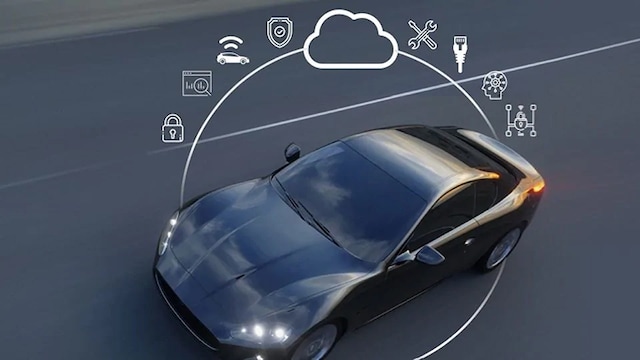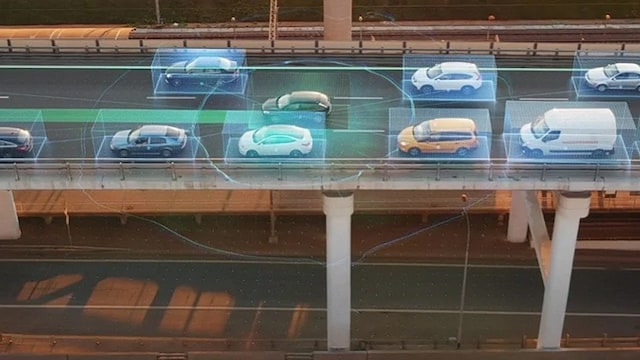There has been a buzz around autonomous vehicles in the automotive sector for
years now, but a dearth of enabling development tools has limited their
deployment in any meaningful way. As a result, many automakers and Tier 1
suppliers have been relegated to theoretical research and development, while
others still have been stalled at lower levels of driving
automation. However, this year we released the Automated Drive Kit (ADK),
a software enablement platform for the development and testing of autonomous
drive solutions. Currently, the ADK integrates multiple sensors,
automotive-grade processors, the Robot Operating System (ROS), and functional
safety software tools in a commercially available, off-the-shelf platform.
Automotive stakeholders now have a baseline for building Level 3 autonomous
drive capabilities today, and a road map to full autonomy for the future.
SAE International standard J3016 defines five levels of autonomous driving.
They are:
Level 1: Driver Assistance – The vehicle provides a
specific function, such as speed control or steering
Level 2: Partial Automation – The vehicle assists in
functions like steering, acceleration and braking
Level 3: Conditional Automation – The vehicle can
drive itself, but the driver has to monitor and be able to take over at any
time
Level 4: High Automation – The vehicle can take over
driving on surface streets, but not highways or freeways
Level 5: Full Automation – The vehicle takes over
driving completely, allowing drivers to remain in a “mind-off”
state
Vehicles with Level 2 capabilities are already on the road today. However,
there are major challenges moving to Level 3, mainly because of the
complexities associated with passing control between vehicles and drivers. A
lack of development tools and platforms further complicates matters for
autonomous drive engineers. As a result, many automakers and ride-share
companies are working independently on the end-to-end autonomous drive
hardware and software stack in an attempt to be first to market with
commercially viable Level 3 capabilities. Progress has been slow to say the
least.
For most automotive engineers, the goal of their autonomous drive development
efforts is to create algorithms that define how self-driving vehicles respond
in safety-critical situations. The value is not, however, in integrating the
underlying sensors, processors and firmware that gather input data and
execute these algorithms.
To accelerate the development and deployment of Level 3 autonomous drive
capabilities and beyond, automotive stakeholders need platforms that abstract
the complexity of enabling technologies and allow them to focus on the end
application software. In response,
NXP Semiconductors, in conjunction with
AutonomouStuff, introduced the
Automated Drive Kit (ADK)
at CES 2018.
Accelerating Level 3 Autonomous Vehicles with the Automated Drive
Kit
The ADK is suite of integrated hardware and software solutions that speed time
to market of Level 3 autonomous vehicle designs. The development platform
includes a number of modular components that can be swapped in or out
depending on design goals (Figure 1) including:

Figure 1. NXP Semiconductors’ Automated Drive Kit (ADK) is a comprehensive set
of technology building blocks that accelerates the development and
deployment of Level 3 autonomous vehicles. Included in the ADK is the NXP
BlueBox 2.0 – BLBX2-DB; LiDAR, radar, vision and positioning
sensors; and the Robot Operating System (ROS) and related middleware.
Self-driving vehicle capabilities can be broken into three functional
segments: Sense, Think and Act (Figure 2). Of these, automotive engineers at
OEMs and Tier 1 suppliers are mostly concerned with developing algorithms
applied during the “Act” phase, but depend on reliable Sense and
Think infrastructure in order to do so. This is what the ADK provides.

Figure 2. The core of the ADK is the NXP BlueBox 2.0 platform, which has a performance-to-power ratio of 90,000
DMIPS at less than 40 watts. Pictured here is a diagram of how BlueBox
performs Sense, Think and Act functions associated with self-driving
vehicles.
Sense – Data streams from the ADK’s myriad
radars and cameras enable applications such as pedestrian detection, object
detection, traffic sign recognition, lane departure warning (LDW), and smart
headlamp beam control. These radar, LiDAR, vision and V2X inputs are
supported by the NXP BlueBox 2.0’s onboard vision and radar processing
elements (S32V234 and SR32R27, respectively). Image data, for example, can be
processed in one of two forms on the S32V234 processor: encoded (MJPEG or
H.264) via Ethernet or in raw format via the MIPI CSI-2/VIU interfaces.
Think – The NXP BlueBox 2.0’s onboard
processors provide 90,000 DMIPS of performance in a 40 W power envelope for
executing autonomous drive workloads, which is supported by 16 GB of built-in
DDR4 RAM and a 256 GB SSD. During the Think stage, sensor data is transferred
to the LS2084A processor for analysis of the driving environment.
Act – After analyzing the driving environment,
autonomous drive algorithms running on the LS2084A processor are used to
determine the best, safest course of action, such as accelerating, steering,
or braking.
To support automotive engineers in their algorithm development efforts, the
ADK is compatible with
Baidu’s Apollo Software Platform, as well as the aforementioned LOP modular and Neusoft ADAS vision software
packages. Autonomous drive designers can also choose to integrate their own
proprietary algorithms with the ADK platform.
Regardless, AUTOSAR®-compliant, functional safety-certified software tools such
as the S32 Design Studio integrated development environment (IDE) outfitted
with a vision software development kit (SDK) and an MCU abstraction layer
within the OS serve to abstract intricacies of requisite Level 3 autonomous
drive hardware.
Level 3 Today, Full Autonomy Tomorrow
NXP Semiconductor’s ADK is available off-the-shelf from
AutonomouStuff, providing easy access to an open innovation platform for autonomous drive
systems that integrates all of the necessary components for Sense, Think and
Act functionality.
The NXP ADK is accelerating time to market for Level 3 self-driving cars
today, but a technology road map will deliver new features that support Level 4
and 5 capabilities in the near future. Whereas autonomous vehicle development
had been stuck in neutral, platforms like the ADK now pose this question to
automakers and Tier 1 suppliers: Will you be left behind?






